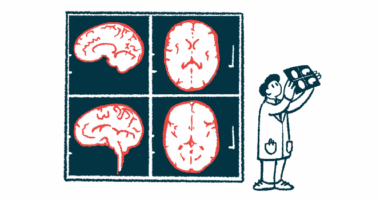How Garden Therapy Can Aid Those With Neuromyelitis Optica

Europe is under an extreme weather alert. It’s so hot that certain trains between countries are not operational — the tracks are buckling under the extreme heat. This makes me think of climate in general and in particular how green space, plants, and gardening have positively affected my physical and mental health.
I’ll admit, I’m not the best gardener. My family makes fun of how I struggle to keep indoor plants alive. I either water too much or not enough, and I once even got a bug infestation (which was particularly gross). Yet I enjoy gardening because of what it represents to me.
Most days are difficult living with neuromyelitis optica (NMO). If I stand for too long, my back swells. If I’m on my knees to garden for too long, my neck locks. In all situations, I struggle with my extremities. I never complain about the pain; it isn’t worth it. Instead, I focus on what I’m able to do today.
My gardens aren’t the nicest on my street. There’s a giant tree that hangs over our driveway and casts a lot of shade on one of my gardens, making it difficult to grow my favorite perennials. In addition, I struggle with the regular upkeep.
But I never give up.
Year after year, certain perennials come back bigger and stronger. I like to think that I can, too.
When I first started to garden, the soil was difficult to contend with. It had the consistency of clay, and it was quite the workout tilling and adding gardening soil. Slowly, I added soil every year, and eventually the perennials I planted started to return.
A published study from the Texas A&M AgriLife Extension listed various benefits of garden therapy that NMO patients might find helpful.
- People who spend time cultivating plants have less stress in their lives.
- Plants soothe humans and provide a positive way for people to channel their stress into nurturing.
- Being around plants helps people concentrate better in the home and workplace.
- Being outside in nature can improve memory performance and attention span by 20%.
My backyard has become my private oasis because of the green space. During the pandemic lockdowns, we built vegetable garden boxes with repurposed lumber. Again, they don’t yield the same vegetables as other gardens on our street, but I have a great selection of fresh herbs.
When I’m outside, even for a few minutes, it’s a form of meditation. There are no drugs, doctors, bills, or concerns. Just me and my plants. Meditation helps restore our immune systems.
What I’m most proud of is how I share my time gardening with my daughter. Teaching her where food comes from, how to never give up, and why it’s important to respect our planet keeps me distracted from my personal woes with NMO.
Note: Neuromyelitis News is strictly a news and information website about the disease. It does not provide medical advice, diagnosis, or treatment. This content is not intended to be a substitute for professional medical advice, diagnosis, or treatment. Always seek the advice of your physician or other qualified health providers with any questions you may have regarding a medical condition. Never disregard professional medical advice or delay in seeking it because of something you have read on this website. The opinions expressed in this column are not those of Neuromyelitis News or its parent company, Bionews, and are intended to spark discussion about issues pertaining to neuromyelitis optica spectrum disorder (NMOSD).







Leave a comment
Fill in the required fields to post. Your email address will not be published.